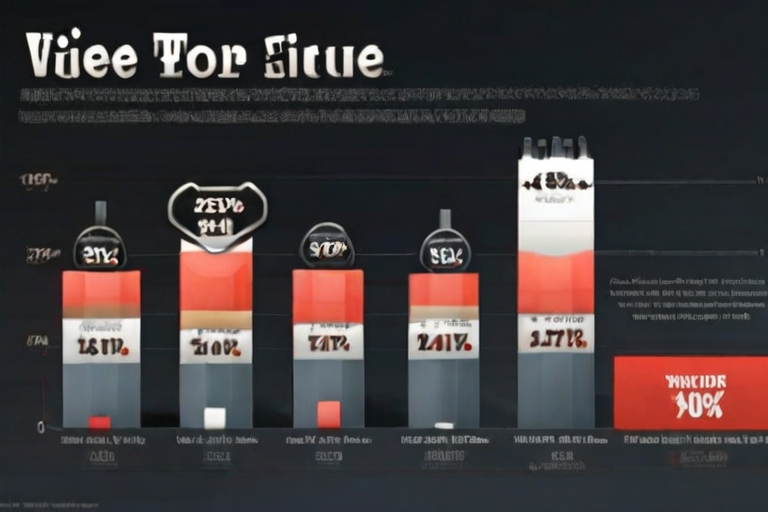Key page elements often lead to mobile users abandoning e-commerce carts, causing frustration for online retailers. Understanding these elements can help businesses improve user experience and keep customers engaged. Metrics Rule, a technical SEO analyst based in Vancouver, emphasizes that addressing these issues is essential for boosting conversion rates and reducing cart abandonment in mobile e-commerce.
The Significance of Cart Abandonment for E-commerce Growth
Understanding the reasons for cart abandonment is essential for improving e-commerce growth. Key reasons for cart abandonment include high shipping costs, complicated checkout processes, and a lack of trust in payment security. These factors directly impact user satisfaction, leading to lost sales opportunities. Research shows that over 70% of mobile users abandon their carts, highlighting the urgency for e-commerce businesses to address these issues. By implementing actionable insights, such as simplifying the checkout process and enhancing website reliability, businesses can significantly improve user satisfaction and increase conversion rates.
Strategies to Reduce Cart Abandonment
To effectively tackle cart abandonment, e-commerce businesses should focus on enhancing the mobile shopping experience. This means ensuring fast load times, providing clear shipping information, and offering multiple payment options. Testing different strategies can help businesses identify which changes most positively influence user satisfaction and drive conversions. By reviewing data on cart abandonment and implementing reliable solutions, businesses can improve their overall e-commerce performance, leading to greater customer loyalty and increased sales.
Identifying Major Causes of Mobile Cart Abandonment
Mobile users abandon their e-commerce carts for several reasons. Key reasons include slow page load times, complicated checkout processes, and poor user experience design. Users often experience frustration when pages take too long to load or when there are too many steps in the checkout process. Concerns about security and lack of trust in the mobile payment options also lead to cart abandonment. Studies show that optimizing mobile design can significantly improve user engagement, reducing abandonment rates.
Essential Mobile Page Elements to Improve User Experience
To enhance user experience and reduce cart abandonment, focus on optimizing essential mobile page elements. Features such as streamlined navigation, fast loading times, and clear calls to action play critical roles. Implementing quality mobile optimization strategies enables users to complete purchases with ease. Incorporating reliable payment options, user reviews, and a simplified checkout process further boosts trust and satisfaction. Collecting data through user experience testing helps identify specific elements that need improvement, ensuring that your e-commerce site meets user expectations.

Impact of Mobile Page Load Speed on User Retention
Mobile page load speed is crucial for enhancing e-commerce user experience, as slow load times can significantly increase cart abandonment rates. Studies show that if a mobile page takes more than three seconds to load, users are likely to abandon their carts. Using testing tools such as Google PageSpeed Insights and GTmetrix provides valuable data, helping you pinpoint areas for improvement. According to recent research, the ideal mobile page load speed is under two seconds to minimize cart abandonment effectively.
Understanding the Importance of Fast Mobile Load Times
Fast mobile page load times directly improve user retention and satisfaction in e-commerce platforms. When users encounter quicker load times, they feel more comfortable navigating the site, leading to lower cart abandonment rates. By focusing on mobile page speed, e-commerce businesses can enhance their overall performance and reliability. Businesses can utilize tools to monitor and improve their page load speeds continually. Investing in this area will help ensure users enjoy a seamless experience, fostering repeat visits and conversions.
Interesting Statistics on Cart Drop-Offs
- 60% of mobile users abandon their carts due to complications during checkout.
- 40% report not being able to find the cart on a mobile site easily.
- 30% cite slow loading times as a reason for leaving their carts behind.
- 73% of users abandon their carts on mobile due to poor page designs.
- 75% of shoppers expect a seamless mobile experience on retail sites.
- 50% of mobile users experience issues with autofill during checkout.
- 82% of consumers want mobile payment options for convenience.

Influence of User Interface Design on Shopping Behavior
User interface design plays a crucial role in shaping mobile shopping behavior and decision-making. A well-designed UI minimizes distractions and enhances the overall user experience, thereby improving conversion rates. Studies show that effective UI elements like clear navigation, fast loading times, and intuitive layouts help users feel more comfortable while shopping. This contributes to higher satisfaction and encourages them to complete their purchases. Best practices in UI design not only enhance usability but also boost trust in the e-commerce platform, resulting in a more reliable shopping journey.
Essential UI Elements for Improved Conversion Rates
To achieve greater conversion rates, e-commerce businesses should focus on essential UI elements. Features such as visible calls-to-action, consistent color schemes, and high-quality images help capture user attention. Incorporating mobile-optimized designs is vital; this allows for easy navigation on smartphones, which is where most online shopping occurs. Research indicates that well-executed UI design can improve conversion rates by up to 30%. Utilizing tools like A/B testing can further identify which designs perform best, ensuring efficiency and user satisfaction in the shopping experience.

Simplifying the Mobile Checkout Process for Better Sales
A streamlined checkout process is essential for reducing cart abandonment rates among mobile users. Complex checkout forms can frustrate users, leading to lost sales. By simplifying the experience, businesses can enhance reliability and efficiency. Key features to implement include single-page checkouts, clear progress indicators, and mobile-optimized payment options. Studies show that over 60% of mobile users ditch their carts due to complicated processes. Ensuring an easy and fast checkout experience increases conversion rates significantly, making it crucial for e-commerce success.
Key Features to Include for an Improved Mobile Checkout Experience
To enhance the mobile checkout experience, it’s important to incorporate essential checkout elements. Prioritizing features like autofill for address and payment data streamlines the process. Offering multiple payment options such as digital wallets, credit cards, and even buy-now-pay-later services provides users with flexibility. Including clear calls-to-action and simplifying the navigation can furthermore improve user experiences. A well-tested and reliable checkout process not only reduces abandonment rates but also fosters trust and encourages repeat purchases.
Advantages of Optimizing Mobile User Experience
- Enhancing navigation helps users find products more easily.
- A streamlined checkout process reduces cart abandonment rates.
- Fast-loading pages keep users engaged and focused on shopping.
- Simple designs attract more mobile shoppers and encourage purchases.
- Mobile-friendly sites allow for quick updates and effective sales.
- Integrating various payment options increases transaction success.
- Clear call-to-action buttons guide users through the shopping journey.

Establishing Trust Through Effective Trust Signals
Trust signals are elements on an e-commerce website designed to build consumer confidence. They include SSL certificates, customer reviews, and recognizable payment options. These elements are essential for ensuring users feel secure while shopping online. Effective trust signals can enhance a mobile user’s experience, leading to lower cart abandonment rates.
Types of Trust Signals to Implement
Implementing various types of trust signals significantly improves the quality of an e-commerce site. Common elements like SSL certificates ensure secure transactions, while customer reviews provide proven insights into product quality. Recognizable payment options enhance the perception of a reliable and efficient shopping experience. Together, these elements create an environment that feels secure and comfortable for mobile users, ultimately reducing abandonment rates.
Mobile Optimization Best Practices for Ecommerce Success
Optimizing your e-commerce site for mobile usage can significantly reduce cart abandonment. Key elements like fast loading times, intuitive navigation, and simplified checkout processes help enhance the user experience. Mobile e-commerce sites should include features such as responsive design, large touch targets, and easy-to-read fonts. Research shows that improving mobile site performance can increase conversion rates by up to 30%. By ensuring these best practices are implemented, you can effectively minimize cart abandonment.
Essential Features for Mobile E-Commerce Sites
To maximize the effectiveness of mobile optimization, it is crucial to include essential features on your e-commerce site. A well-designed mobile layout should consist of intuitive product listings, efficient filters, and a streamlined checkout process. Implementing fast loading pages and optimizing images improves reliability and performance. Furthermore, incorporating customer reviews and trust signals can enhance the overall user experience. These features are designed to make navigation easy and efficient, ensuring that users stay engaged and complete their purchases.
Brands Trying to Improve Mobile Shopping Experiences
- Amazon excels with user-friendly navigation but can overwhelm with options.
- Walmart offers streamlined checkout but experiences slow load speeds.
- Target excels with a clean interface but has limited payment methods.
- eBay provides a wide range of items but has a cluttered mobile page.
- Oculus has immersive product displays but lacks user-friendly navigation.
- GameStop allows quick browsing but struggles with slow mobile performance.
- Best Buy offers informative product details but features numerous pop-ups.
Leveraging Analytics to Understand User Behavior
Analytics plays a crucial role in identifying the reasons behind mobile cart abandonment. By examining user behavior analytics, businesses can spot trends that highlight where users are dropping off. For instance, metrics such as bounce rates, heatmaps, and session durations provide insights into problematic areas on the site. Analytics tools like Google Analytics and Hotjar can help in understanding user interactions and optimizing the e-commerce experience. Utilizing these insights can significantly enhance mobile cart retention rates and improve overall user satisfaction.
Essential Analytics Tools for E-commerce Success
Using the best analytics tools can greatly enhance understanding of customer behavior in the e-commerce sector. Tools such as Google Analytics, Mixpanel, and Kissmetrics provide essential metrics that reveal user navigation patterns. For example, tracking conversion rates and identifying drop-off points in the checkout process can highlight areas that need improvement. A well-structured analytics setup enables faster iterations in e-commerce platforms, ultimately leading to a more enjoyable shopping experience and reduced cart abandonment rates.
